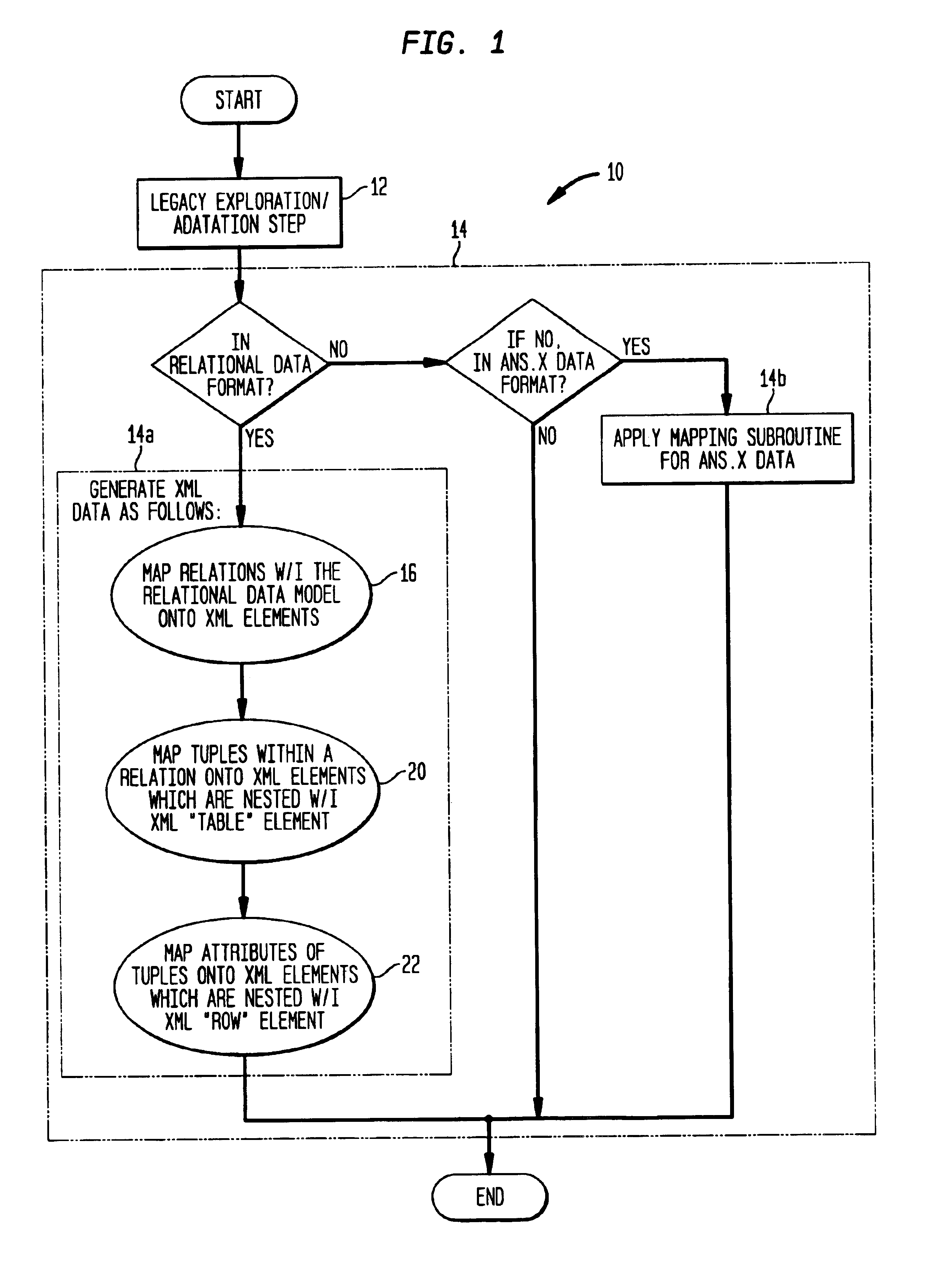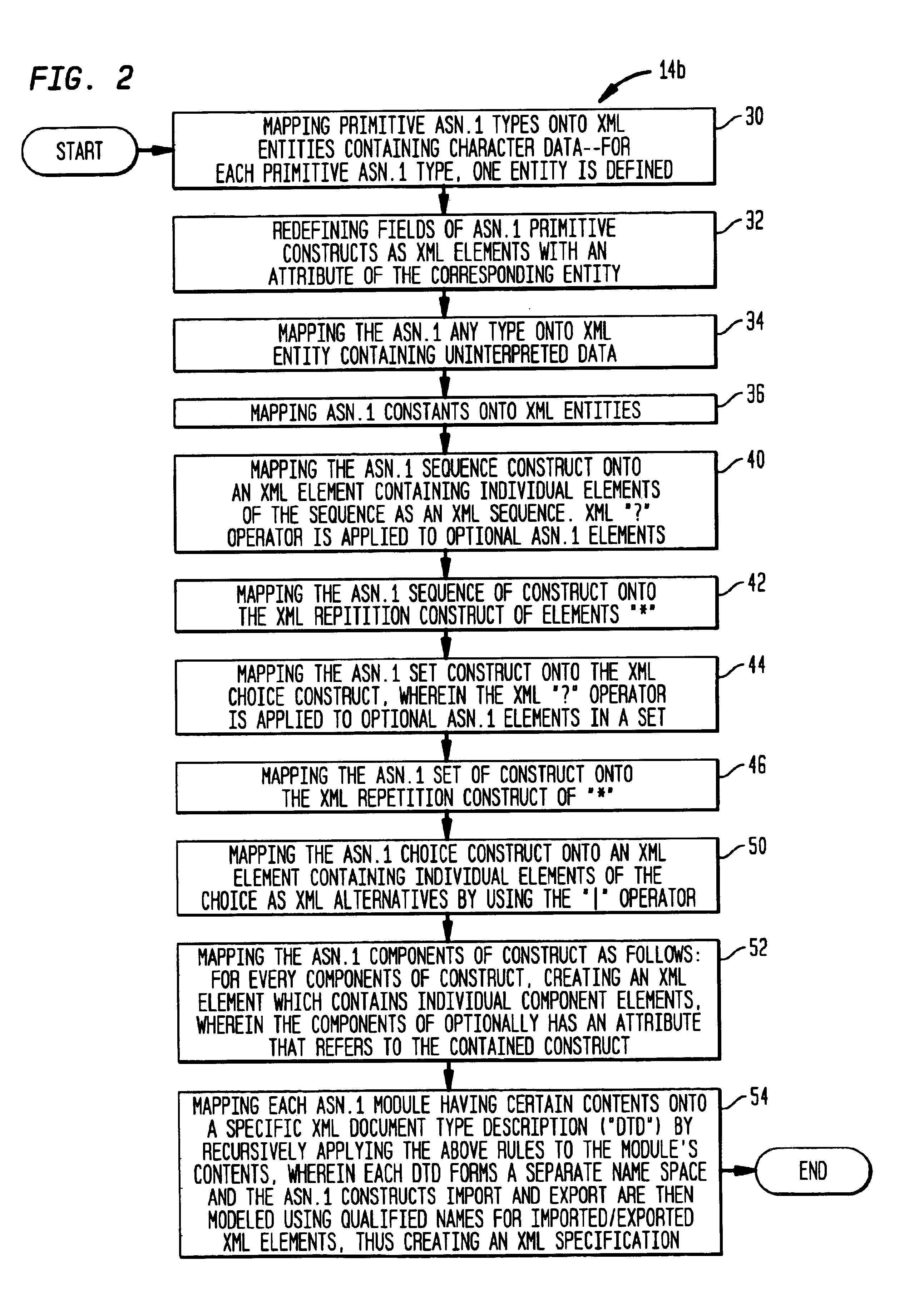Method of externalizing legacy database in ASN.1-formatted data into XML format
a legacy database and formatted data technology, applied in the field of data conversion, can solve the problems of transformations not generating meta-data descriptions, and the formalism does not lend itself to describe the structure of data exchanged between computing entities in typical client-server applications, and achieve the effect of facilitating e-commer
- Summary
- Abstract
- Description
- Claims
- Application Information
AI Technical Summary
Benefits of technology
Problems solved by technology
Method used
Image
Examples
Embodiment Construction
[0017]Referring now to FIG. 1, the method 10 of the present invention is a method for externalizing legacy data from a legacy database on a data resource into an Extensible Markup Language (“XML”)-compliant format where the format is specified by an automatically generated XML meta-description. This reformatting enables access and processing of legacy data by XML-compliant applications.
[0018]The method 10 automates the data format mapping between relational databases or ANS.X formatted databases and an XML compliant representation of that data, by performing the following steps: (1) an exploration / adaptation step 12 for exploration of the data resource, and (2) a mapping step 14 for generation of the XML data out of the legacy data.
[0019]The submethod 14a or 14b to be applied in the second mapping step 14 is determined by the data format of the legacy data. If the data is in relational data format, the submethod 14a is applied, and includes three substeps. In a first substep 16, rel...
PUM
 Login to View More
Login to View More Abstract
Description
Claims
Application Information
 Login to View More
Login to View More - R&D
- Intellectual Property
- Life Sciences
- Materials
- Tech Scout
- Unparalleled Data Quality
- Higher Quality Content
- 60% Fewer Hallucinations
Browse by: Latest US Patents, China's latest patents, Technical Efficacy Thesaurus, Application Domain, Technology Topic, Popular Technical Reports.
© 2025 PatSnap. All rights reserved.Legal|Privacy policy|Modern Slavery Act Transparency Statement|Sitemap|About US| Contact US: help@patsnap.com



